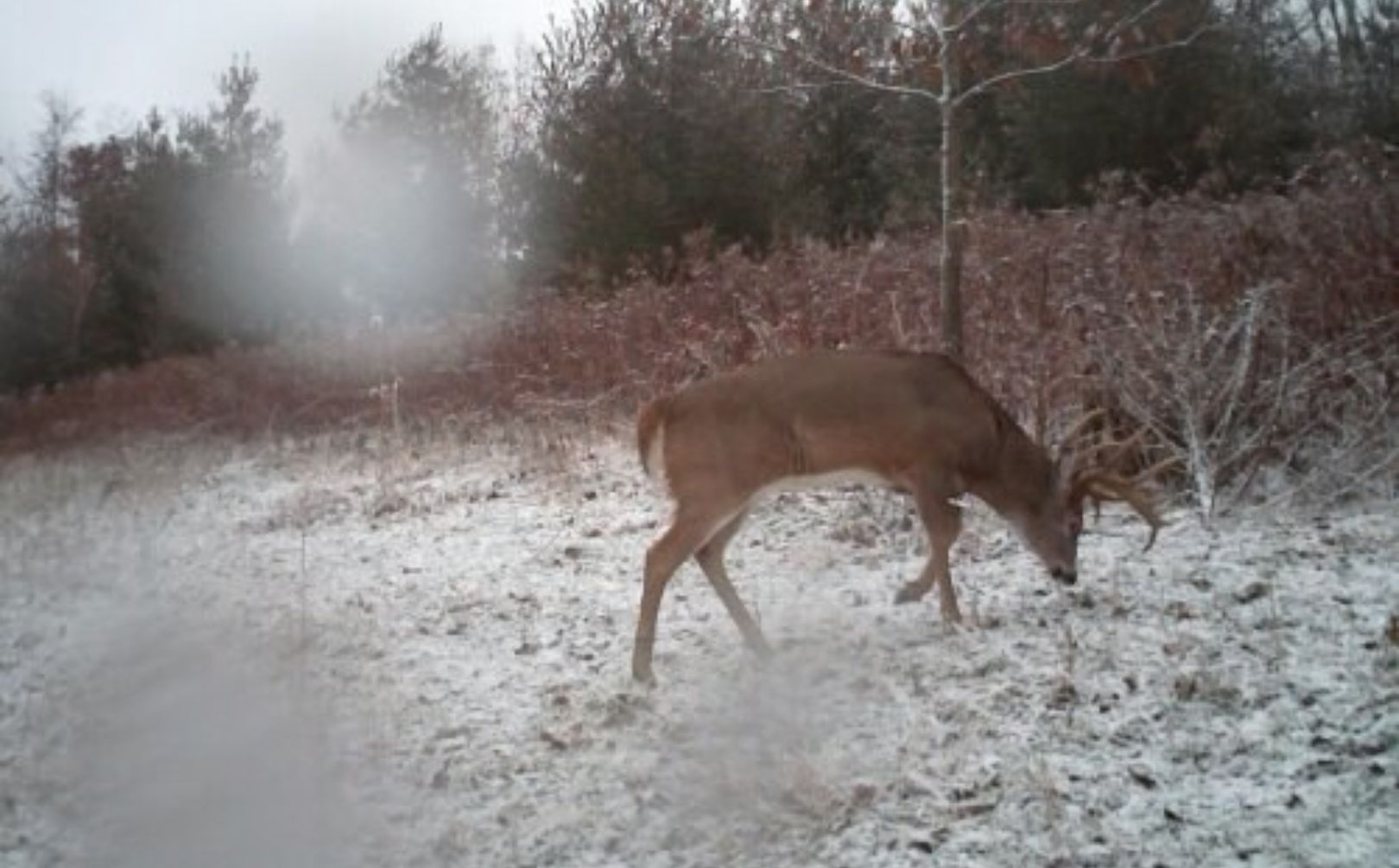
As falling temps and snow are making their way across the Midwest, don't miss out on this outstanding whitetail cold front hunting opportunity. Deer are rhythmic pattern feeders, feeding 5Xs in a 24 hour period. A cold front offers both a major distruption to feeding activity levels, and a major boost to feeding activity levels. Extreme weather, wind and noise significantly impact the quality level of each feeding period during a cold front, but at the same time those same conditions create a period of heavy feeding when they eventually pass. The stress of the front depletes energy levels, and when you add the factor of energy burning cold temperatures, deer can become quite ravenous following a major storm! However, just because there is a cold front in the forecast, doesn't mean the entire weather event is ripe for sitting in a stand; let the hunter beware! Here are 5 quick tips for a successful whitetail cold front hunt, and what to look for when the conditions eventually Flip closer towards the beginning of the rut:
1. A September to mid-October cold front is a feeding phase front, not to be confused with a rut phase:
High priority hunts include cold, quiet post-front evening hunts, as well as limited morning feeding periods. Rut cruising funnel stands and bedding area sits may prove both unproductive, and risky for their potential to add hunting pressure to stand locations that will feature extremely high hunting values only weeks away. Focus on deer travel corridors on the way to food, or within long browsing areas of natural food sources, including stands of oaks and apple trees.
2. Morning Hunts Can Work:
When periods of extreme weather, wind and rain die during the nighttime hours, a morning sit can prove extremely productive. During extreme weather patterns deer will be locked into their bedding areas. As soon as the conditions are calm and cold, deer will feed...and this may include during the morning hours. Choose a stand near bedding, but within a safe enough distance to access the stand without spooking deer within the bedding area. If you have a favorite White Oak, this may be the time to spend a calm, cold morning keeping an eye out for a mid-morning bruiser.
3. Let it rain-Acorns!:
Imagine the life of a cold front as a deer. You are held down by wind, rain, noise and stress. You are hungry and the entire time you are teased with the last portion of the acorn crop raining down around you. As soon as the conditions are calm...you will be on your feet to feed, and feed heavily. Hidden acorn flats adjacent to high quality bedding opportunity can lead to a great whitetetail cold front hunt!
4. Cold, Calm, Evening Hunts are KEY:
Regardless of how great the morning looks, make sure that you do not deminish a potential evening hunt within the same deer movements you will hunt in the afternoon. Deer can feed anytime during the night, it really just depends on the weather conditions and moon phase. However, deer consistently feed heavily during the afternoon to evening hours because they have been confined to their bedding areas the entire day. When you add the impact of cold, and the passing of a stress induced front including wind, rain, snow and a general lack of quality feeding opportunities-it's time to hit the woods!! An evening sit during these conditions can feature a higher opportunity of success than several days on either side of the hunt, combined. It pays to watch for these conditions and not to miss them.
5. Conditions Change Quickly:
As soon as the temperatures and deer hunting opportunities change for the better...they change back to dull and average. The very conditions that drive the quality of the hunt, also contribute to it's decline. Cold front conditions are extreme, harsh and fleeting, and so is the impact of the front on the quality of the hunt. This rollercoaster of feast or famine will continue all the way to the end of the rut, with a major change in hunting tactics needed just around the corner...
The Flip of Tactics
While evening hunts rule the day during early October, your hunting tactics should shift drastically towards the end of October and into November. There is nothing better than taking a toe-numbing morning sit, following a major cold front during the last 10 days of October. The bucks will quickly enter the Pre-rut phase of the buck during this period of time, and their activities are directly parallel to the quality of the various cold fronts. If you have a mature buck using the land that you hunt, a late October morning hunt will feature an outstanding opportunity to kill him. If you don't...those same conditions will potentially cruise a mature buck to you in early November, during the Peak-rut, and later into the Post-rut.
Conclusion
The time is NOW to begin the rollercoaster ride of October and November cold fronts, and I hope to do all that I can to help you along the way! For additional cold front reading from my website, please visit the following related Cold Front articles from the past few years: